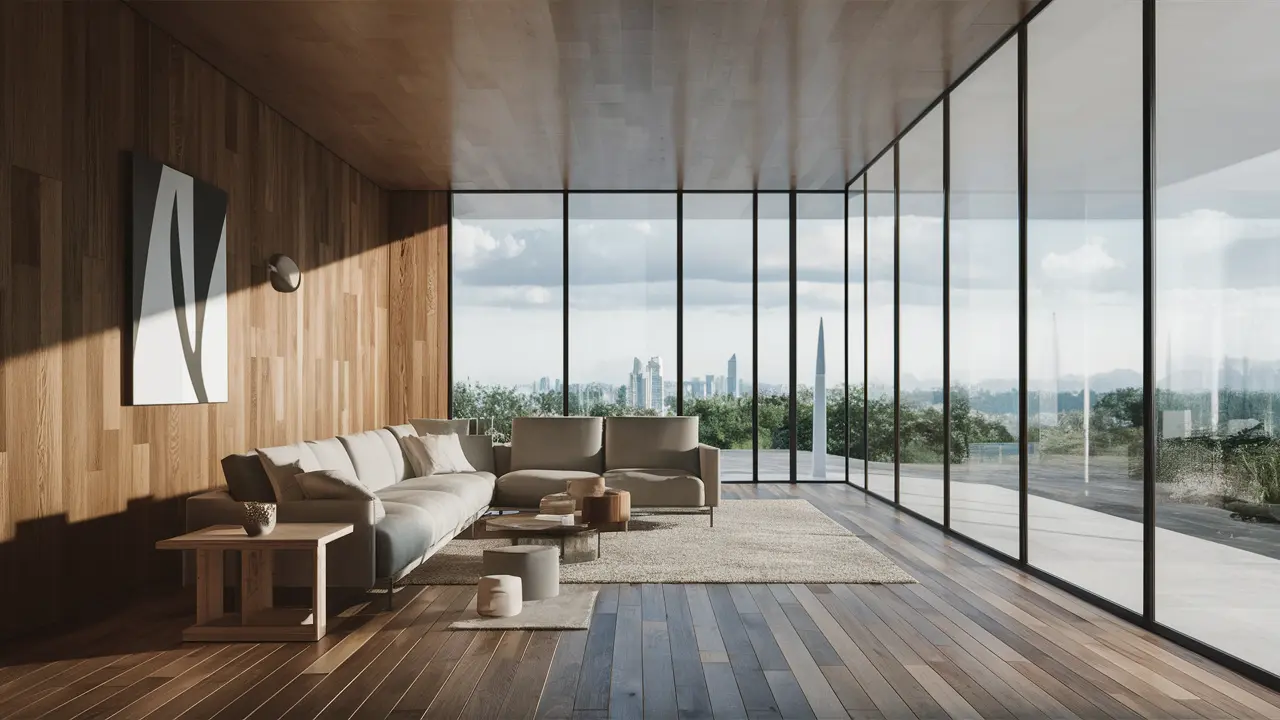Innovative materials are transforming modern architecture by offering new possibilities in design, sustainability, and efficiency. These materials are often characterized by their advanced properties, eco-friendliness, and suitability for various architectural applications. Here are some innovative materials making waves in modern architecture:
1. Cross-Laminated Timber (CLT)
- Description: Engineered wood panels made by stacking layers of wood at right angles and bonding them together.
- Benefits: Lightweight, strong, and sustainable alternative to concrete and steel; promotes carbon sequestration; quick and efficient construction.
2. Carbon Fiber Reinforced Polymers (CFRP)
- Description: High-strength composite materials made of carbon fibers embedded in a polymer resin matrix.
- Benefits: Lightweight, high tensile strength, and corrosion-resistant; used for structural strengthening, façade panels, and innovative architectural forms.
3. Bioplastics
- Description: Biodegradable and renewable plastics derived from plant-based sources like corn starch or cellulose.
- Benefits: Reduces dependence on fossil fuels; biodegradable and compostable; used for insulation, cladding, and interior finishes.
4. Self-Healing Concrete
- Description: Concrete embedded with capsules of healing agents that activate when cracks form, repairing themselves autonomously.
- Benefits: Increases durability and lifespan of concrete structures; reduces maintenance costs and environmental impact.
5. Transparent Wood
- Description: Wood treated to remove lignin, making it transparent while retaining its strength and thermal properties.
- Benefits: Enhances daylighting and aesthetic appeal; potential for use in windows, partitions, and façades.
6. Bamboo
- Description: Fast-growing grass with exceptional strength and versatility in construction.
- Benefits: Renewable and sustainable; rapid growth reduces carbon footprint; used for flooring, structural elements, and cladding.
7. Graphene
- Description: Single-layer carbon atoms arranged in a hexagonal lattice, offering exceptional strength, conductivity, and flexibility.
- Benefits: Potential applications in ultra-thin and lightweight building materials, such as solar panels, batteries, and smart windows.
8. Recycled Materials
- Description: Materials sourced from post-consumer or post-industrial waste, such as recycled glass, plastic, or metal.
- Benefits: Reduces landfill waste; conserves natural resources; used in concrete aggregates, insulation, and decorative finishes.
9. Ferrofluids
- Description: Nanoparticles of iron or iron oxide suspended in a carrier fluid, responding to magnetic fields.
- Benefits: Used for adaptive façade systems that adjust transparency or solar heat gain based on environmental conditions.
10. 3D-Printed Concrete
- Description: Concrete structures fabricated layer by layer using 3D printing technology.
- Benefits: Enables complex geometries and customized designs; reduces material waste and construction time; used for architectural elements and prefabricated components.
Implementation and Impact:
- Sustainability: Many innovative materials focus on reducing environmental impact, whether through renewable sourcing, biodegradability, or energy efficiency.
- Design Flexibility: These materials offer architects and designers new possibilities in form, texture, and functionality, enabling innovative and sustainable architectural solutions.
- Performance Enhancement: Improved durability, strength, and efficiency contribute to longer-lasting and more resilient buildings, reducing maintenance costs over time.
Incorporating these innovative materials into modern architecture not only pushes the boundaries of design but also supports sustainability goals and enhances building performance in terms of energy efficiency and occupant comfort. As technology continues to evolve, these materials are likely to play an increasingly pivotal role in shaping the future of architectural innovation.

